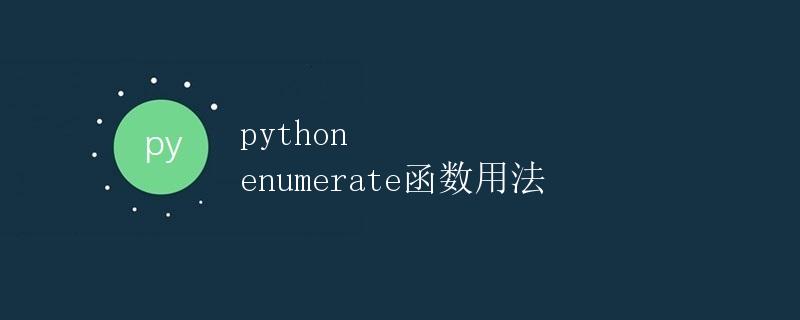Python enumerate函数用法

在Python中,enumerate() 函数是一个内置函数,它可以对一个可迭代的对象(如列表、元组、字符串等)进行循环遍历,并同时获取每个元素的索引值。enumerate() 函数返回的是一个枚举对象,里面包含了索引值和对应的元素值。
语法
enumerate() 函数的语法如下:
enumerate(iterable, start=0)
参数说明:
iterable:要枚举的可迭代对象,如列表、元组、字符串等。start:可选参数,表示起始的索引值,默认为0。
示例
让我们通过一些示例代码来详细了解 enumerate() 函数的用法。
示例1:枚举列表元素
fruits = ['apple', 'orange', 'banana', 'grape']
for index, fruit in enumerate(fruits):
print(f'Index: {index}, Fruit: {fruit}')
运行结果:
Index: 0, Fruit: apple
Index: 1, Fruit: orange
Index: 2, Fruit: banana
Index: 3, Fruit: grape
在这个示例中,我们定义了一个列表 fruits,然后使用 enumerate() 函数在循环中同时获取每个元素的索引值和元素值,打印出来。
示例2:指定起始索引值
colors = ['red', 'green', 'blue']
for index, color in enumerate(colors, start=1):
print(f'Index: {index}, Color: {color}')
运行结果:
Index: 1, Color: red
Index: 2, Color: green
Index: 3, Color: blue
在这个示例中,我们指定了起始索引值为1,然后同样使用 enumerate() 函数在循环中获取每个元素的索引值和元素值,并打印出来。
示例3:枚举字符串字符
string = 'Python'
for index, char in enumerate(string):
print(f'Index: {index}, Character: {char}')
运行结果:
Index: 0, Character: P
Index: 1, Character: y
Index: 2, Character: t
Index: 3, Character: h
Index: 4, Character: o
Index: 5, Character: n
在这个示例中,我们定义了一个字符串 string,然后使用 enumerate() 函数在循环中获取每个字符的索引值和字符值,打印出来。
总结
通过本文的介绍,我们了解了enumerate() 函数的语法和用法。这个函数在循环遍历可迭代对象并需要索引值时非常有用,可以让代码更加简洁和高效。
 极客教程
极客教程